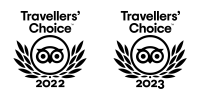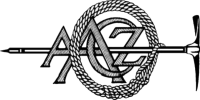- Home
- Nepal
- Adventure Activities
- Peak Climbing
- Mountain Expedition
- Local Tours
- Sirubari Village Homestay
- Ghale Gaun
- Kalinchowk Tour
- Halesi Mahadev - Maratika Cave package
- Chitwan Jungle Safari
- Day tour in Kirtipur
- Day tour in Kathmandu City
- Spiritual Tour to Muktinath
- Chitlang and Kulekhani
- Bardiya National Park
- Jeep Tour to Rara Lake
- Gosaikunda Lake
- Manakamana day Tour with cable-car ride
- 4WD Jeep Tour to Upper Mustang
- Family Holidays
- Heli & Mountain Flights
- Trekking Routes
- Kailash Mansarovar
- Bhutan
- Tibet
- Multi Country
- Domestic Flights
- Contact
- Home
- Nepal
- Adventure Activities
- Peak Climbing
- Mountain Expedition
- Local Tours
- Sirubari Village Homestay
- Ghale Gaun
- Kalinchowk Tour
- Halesi Mahadev - Maratika Cave package
- Chitwan Jungle Safari
- Day tour in Kirtipur
- Day tour in Kathmandu City
- Spiritual Tour to Muktinath
- Chitlang and Kulekhani
- Bardiya National Park
- Jeep Tour to Rara Lake
- Gosaikunda Lake
- Manakamana day Tour with cable-car ride
- 4WD Jeep Tour to Upper Mustang
- Family Holidays
- Heli & Mountain Flights
- Trekking Routes
- Kailash Mansarovar
- Bhutan
- Tibet
- Multi Country
- Domestic Flights
- Contact
Jumla Rara Lake
An exciting Cultural experience
Rara is Nepal’s smallest and most scenic national park that covers 106 square kilometers. Much of the park is at an altitude of about 3,000 meters forested by conifers. The centerpiece is the pristine Lake Rara, also known as Mahendra Tal and is the largest lake in Nepal. The lake is surrounded by richly forested hills and Chuchemara Danda at 4,087 meters is the best vantage point to witness stunning views of the lake and the thickly forested hillsides and the snow-capped peaks around it.Other summits in the park area are Ruma kand at 3,731 meters and Malika Kand at 3,444 meters which are situated to the north of the lake. The trek to Rara Lake begins at Jumla, a village in the Trans – Himalayan area and the rides covered with forests and alpine pastures.
4 - 16
Detailed Itinerary
- Day 01: Arrival in Kathmandu (1300m)
Today, we will welcome you at the airport and drop you to your Hotel. - Day 02: Kathmandu Sightseeing and afternoon fly to Nepalgunj (150m)
We wake up early in the morning, have our breakfast and visit some of the UNESCO sites in Kathmandu. Afternoon,we will have a scenic flight to Nepalgunj. - Day 03: Fly from Nepalgunj to Jumla (2540m)
Early in the morning, we will take a first flight to Jumla. We leave the Terai plains of Nepalgunj and fly to the hilly landscape of Jumla. After about 20 minutes of scenic flight, we reach Jumla. Jumla is one of the least accessible districts in Nepal situated in the foothills of the Sisne Himalya. - Day 04: Trek from Jumla to Bumra (2850m)
On the first day of our trek, we have to ascend uphill and cross two suspension bridges above Himal River. We have to pass through a few villages before reaching Bumra. - Day 05: Trek from Bumra to Pina (2440m)
From Bumra, we ascend and cross the Ghurchi Lagna pass at 3480 m. We continue our ascent and pass through a few villages before reaching Bumra.We cross the stream by a log bridge to the west side and climb to Chautha (3100m) in a forest clearing. we climb up the narrow gully on the north east slope and skirt north across a series of spurs to reach Pina (2430m). - Day 06: Trek from Pina to Gamagadhi (2095m)
On the following day, we ascend steep trail to Gamagadhi. Gamagadhi is the headquarters of the remote Mugu District of Nepal. - Day 07: Trek from Gamagadhi to Rara Lake (3010m)
From Gamagadhi, our trail is easy and we walk on a relatively straight path until Rara Lake. We then follow the river upstream to Rara Lake, where we savor the most fascinating trekking experience amid the beauty of nature.Chuchemara Peak lies on the southern side of the Rara Lake whereas Ruma Kand and Malika Kand peaks frame its northern area. - Day 08: Explore Rara Lake (3010m)
Today is the day to explore the beauty of Rara Lake. After breakfast we investigate the azure waters of the massive lake also referred to as Mahendra Taal (Lake) after late king Mahendra. We can also climb up to the wooden observation tower behind the post office for fine views of the lake and surrounding hills. Swimming is allowed in the lake and it is piercingly cold and refreshing. - Day 09: Trek from Rara Lake to Khatyar Khola Camp (2965m)
The trail today is not as strenuous as it looks. We get to admire the Himalayan Panorama. After passing through a few villages including Murma. From Murma, the ascent gets a little easier. The trail further passes through bamboo and birch forests before crossing the Khatyar Khola where we will spend our overnight. - Day 10: Trek from Khatyar Khola Camp to Ghoro Singha (3050m)
The ridge continues to south for another 200 meters but it is pleasant trail with distant view of the mountains. There is no pass on this high ridge and the trail turns south-east at an altitude of 3749 meters and descend by the east side of Chuchemara Danda. - Day 11: Trek from Ghoro Singha to Sinja (2490m)
We descend through the steep pass for a while followed by a relatively easy trail until Botan (2895 m).The climb begins immediately west of Ghoro Singha and takes about an hour through forest to top the crest at 5351 meters. After descending for about two hours, we reach Sinja. - Day 12: Trek from Sinja to Chala Chaur (2980m)
We continue our trek along a rock-strewn path but it is a pleasant trail amidst forest wilderness. Following the stream, we ascend the ridge. The trail clings to the south side of the stream all the way finally reaching to Chala Chaur. - Day 13: Trek from Chala Chaur to Chauriya Chaur (3580m)
Our trek continues along a rock-strewn path. We have a relatively straight trail until reaching Jaljala chaur, and then we ascend slowly until the Jaljala pass. - Day 14: Trek from Chauriya Chaur to Jumla (2,540m)
On the last day of our trek, we follow our foot prints back to Jumla. The trail provides good views of the Jumla town. The return to the town is pleasant descent in slow stages. - Day 15: Fly from Jumla to Nepalgunj (150m)
Today, we fly from Jumla to Nepalgunj. After a tiring walk for 11 days, we will enjoy a pleasant and scenic flight to Nepalgunj . - Day 16: Trek from Nepalgunj to Kathmandu (1300m)
We take the earliest flight available from Nepalgunj to Kathmandu. After reaching Kathmandu, we freshen up and take a rest. - Day 17: Departure
Today we will drop you to the airport and pray for your safe journey.
This trip can be redesigned or redeveloped as per your taste, For more information please e-mail us at This email address is being protected from spambots. You need JavaScript enabled to view it.
Cost and dates
We do small group trek or private trip as your request.
For quick information / contact us at whatsapp/viber + 977 9841815039
Or Drop us inquiry at This email address is being protected from spambots. You need JavaScript enabled to view it.
Frequently Asked Questions
It is always a good idea to involve yourself in doing physical exercises before trekking. Not that you have to be all athletic and muscular to trek. An average level of physical fitness will make the journey less stressful.
Availability of drinking water is not the problem. The problem is the cost of it at higher altitude. As you gain height, the price of water rises up to 2-3$ per liter.An alternative way of getting drinking water is by having your water bottles filled in tea houses. Tea houses will provide you boiled water for about 1$ per liter. They are completely safe for drinking.
Food is not of any concern while trekking. You will get all kinds of cuisines. For breakfast, tea houses will provide you with eggs cooked in your preferred style along with pan cakes, bread butter, roti, and so on.Various other dishes like pizza, pasta, momo, chowmein and many more are also available. The most preferred dish is Dal Bhaat. It is a typical Nepali meal. Rice is served with vegetable curry, lentils, tomato chutney and meat curry.
Trekking is an extreme sport and does come with a lot of risks. Some unavoidable risks are avalanche, heavy rainfall, earthquake, landslide and other such natural calamities.You might fall and injure yourself or catch some viral flue. The deadliest risk of trekking is AMS or Acute Mountain Sickness. This sickness occurs when a great altitude is gained and the body fails to adjust to the changing pressures associated with it. Anyone can fall a victim of the sickness and if not treated in time, it can be fatal.
There is no such hard and fast rule that you must have one. But it is highly advisable to travel with them. Some of the treks cannot be trekked without a guide most of them are the restricted ones.
Visit us
-
JP Marga, Thamel, Kathmandu, Nepal
-
+977-01-5365371
-
+977 98418-15039
(Whats App, Viber & Telegram)








